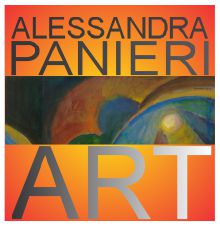Russian and Greek Orthodox religious icons are a continuous source of inspiration. The thoughtful geometry underlining compositions combined with the vibrant colors and pattern juxtapositions make them a powerful story telling tool and transport me to another world.
Background and Definitions
An icon (from Greek eikōn "image") is a religious work of art, most commonly a painting, a tool of worship traditionally developed and adopted in Byzantine and other Eastern Orthodox Churches.
The main purpose of an icon is help the viewer to focus while meditating and to move him/her from contemplation to prayer.
The artistry in the depiction of the images and the colors are reminders of another space beyond the material world. Because icons are not portraits/genre scenes but symbols of a higher reality they cannot be painted in a realistic style. The artwork represents the link between the temporal and the eternal supporting the worshiper in his/her own pilgrimage through this earthly life.
It is said that a good icon is one that inspires prayer and asceticism.
Symbolism
The painting of an icon is an intensely ritualized process which starts with the preparation of the wooden support with six layers of gesso, as many as the days of Creation in Genesis 1.
The images are painted starting from dark colors to light ones again in reference to the creation of the World: from shadow toward light, adding layer after layer of paint and lines.
Color is used in a highly symbolic way. Gold represents "uncreated light" and therefore God himself and the radiance of Heaven; Blue is the divine life. Red is the color of action, blood and human life and Green is the color of natural, living things, of grass and leaves, youth, flowering, hope, and eternal renovation.
Sano di Pietro (Siena 1406-1481), The Madonna and Child with Saint Bernardino of Siena
Pre-Reinassance Italian Art
Panel paintings in the Byzantine tradition appeared for the first time in Italy in the thirteenth century. The style quickly came to dominate both church and private commissions across Europe.
Tryptich
A triptych is a work of art (usually a panel painting) that is divided into three sections, or three carved panels that are hinged together and can be folded shut or displayed open. The middle panel is typically the largest and it is flanked by two smaller related works, although there are triptychs of equal-sized panels.
Painting an icon is a spiritual journey.
In the spirit of introspection and meditation I have painted three personal icons arranged in a tryptich. Although I planned to use egg tempera and follow the traditional method I changed course by turning to contemporary materials: acrylics on clay board.
The spiritual journey consisted in taking the time to reflect and meditate on what values and dreams nourish my spirit and celebrating them with color and design: "Vitam Semper Amate"- Always Love Life.








